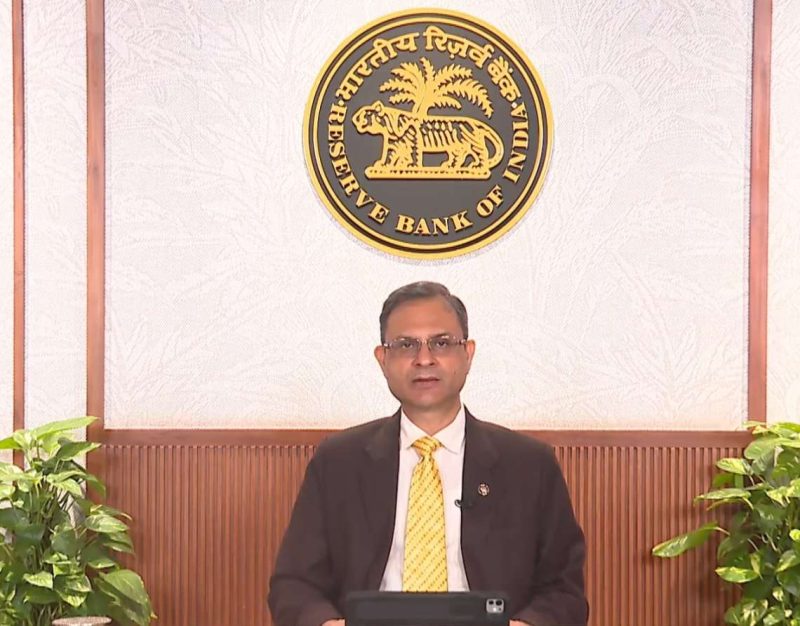The growing participation of retail investors in derivatives — often driven by the allure of quick profits — has led to a surge in daily turnover but raised red flags about the long-term sustainability and potential market shocks
In a significant regulatory shift, the Securities and Exchange Board of India (SEBI) is reviewing the rules governing the derivatives market to better protect retail investors, while ensuring that the overall market structure remains efficient and vibrant, SEBI Chairman Tuhin Kanta Pandey said on Wednesday.
Pandey clarified that the market regulator’s intent is not to impose a clampdown on the high-volume futures and options (F&O) segment, but to strike a fine balance between safeguarding small investors and maintaining liquidity and participation in the equity derivatives market.
“We are continuously reviewing the market, gathering feedback, and we are ready to make adjustments where necessary,” Pandey said in an interview with NDTV Profit. He emphasized that the regulator is aiming to improve the structure of the market and reduce unnecessary risks for small and inexperienced investors.
Reforms in Progress
SEBI had earlier released a consultation paper proposing reforms in the derivatives market, which drew over 800 public comments. Pandey confirmed that these responses are currently under review and a final decision on the proposals will be announced soon.
Several of the proposed changes can be implemented without board approval and could be enacted directly through administrative procedures, paving the way for quick rollout.
One of the key proposals under consideration is a shift in the calculation method of open interest (OI) — a metric used to measure activity in futures and options. SEBI is considering moving from the current notional value method to a ‘Future Equivalent’ approach. This change is expected to prevent inflated open interest figures, which sometimes trigger trading bans on specific stocks unnecessarily.
Another proposed reform involves the calculation of the Market-Wide Position Limit (MWPL). Currently set at 20 per cent of a stock’s free-float market capitalisation, SEBI now suggests using the lower of 15 per cent of free-float market cap or 60 times the average daily delivery value (ADDV) in the cash segment. The move aims to curb excessive speculative trading, particularly by retail investors, while keeping legitimate hedging and arbitrage activities intact.
Pandey’s comments come amid rising concerns over retail participation in the derivatives market. A SEBI report released last year showed that nearly 90 per cent of retail investors incur losses while trading in the F&O segment. This revelation prompted the regulator to consider policy measures to protect unsophisticated participants from high-risk trading.
The growing participation of retail investors in derivatives — often driven by the allure of quick profits — has led to a surge in daily turnover but raised red flags about the long-term sustainability and potential market shocks.
“Retail investors are increasingly entering segments that are inherently risky. While we support investor participation, we also want to ensure it is informed, responsible, and based on sound risk management principles,” Pandey added. While SEBI works to strengthen the market’s structural integrity, broader macroeconomic indicators offer some comfort for retail investors and the financial system at large.
In a positive development, the Ministry of Labour and Employment reported that inflation for agricultural and rural labourers eased significantly in March. Year-on-year inflation based on the CPI-AL and CPI-RL stood at 3.73 per cent and 3.86 per cent, respectively — nearly half of what was recorded a year ago.
The easing of inflation, particularly food inflation — which dropped to a 28-month low of 2.69 per cent — offers relief to low-income rural households and boosts overall consumption capacity in these regions. This could indirectly support capital markets by increasing household savings and investment potential.
RBI Injects Liquidity to Stabilise Bond Markets

Adding to the macroeconomic momentum, the Reserve Bank of India (RBI) announced plans to inject liquidity worth Rs 1.25 lakh crore into the financial system through government bond purchases in May. The liquidity infusion is aimed at stabilizing bond yields and supporting orderly market conditions, especially following recent volatility triggered by geopolitical concerns.
The RBI has scheduled four open market operations (OMOs) between May 6 and May 19. These follow a series of similar measures in April, where the central bank bought Rs 1.2 lakh crore worth of bonds and reduced the repo rate by 25 basis points as part of its shift to an accommodative monetary stance.
RBI Governor Sanjay Malhotra stated that the central bank would continue to monitor liquidity conditions and take appropriate actions to ensure financial stability. He also cited positive developments in agricultural output and falling crude oil prices as factors likely to keep inflation in check.
As SEBI finalizes its derivatives market reforms, the emphasis remains firmly on investor protection and sustainable market growth. With liquidity support from the RBI, easing inflation, and a recalibration of risk management norms, India’s financial regulators appear to be steering the markets toward a more stable and inclusive future. Retail investors, who form a growing part of India’s capital market ecosystem, are set to benefit from a safer, more transparent trading environment — even as the regulator works to ensure that market dynamics are not stifled by excessive restrictions.













